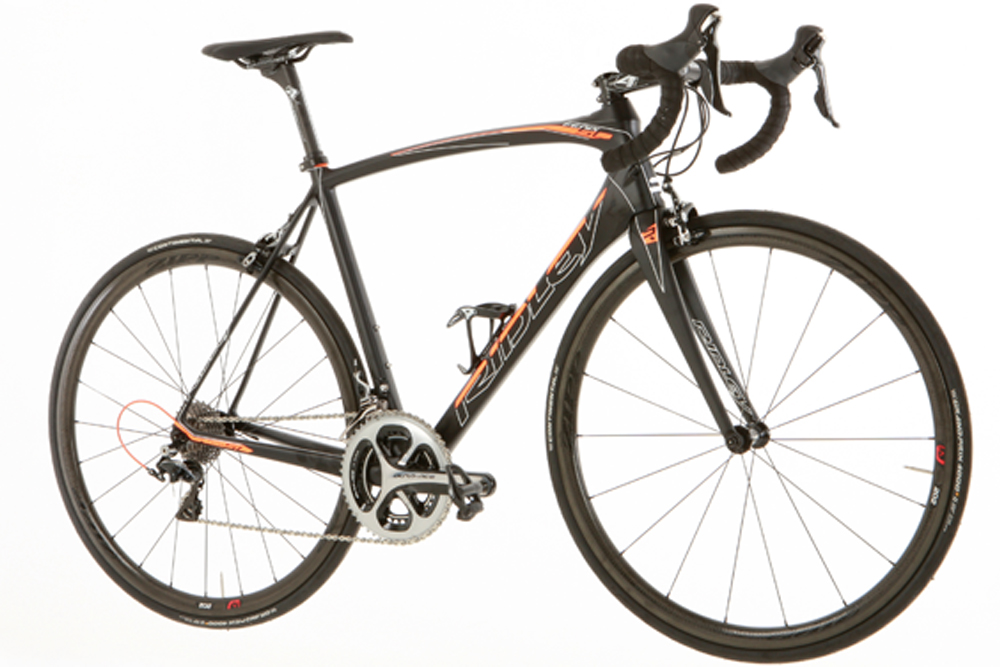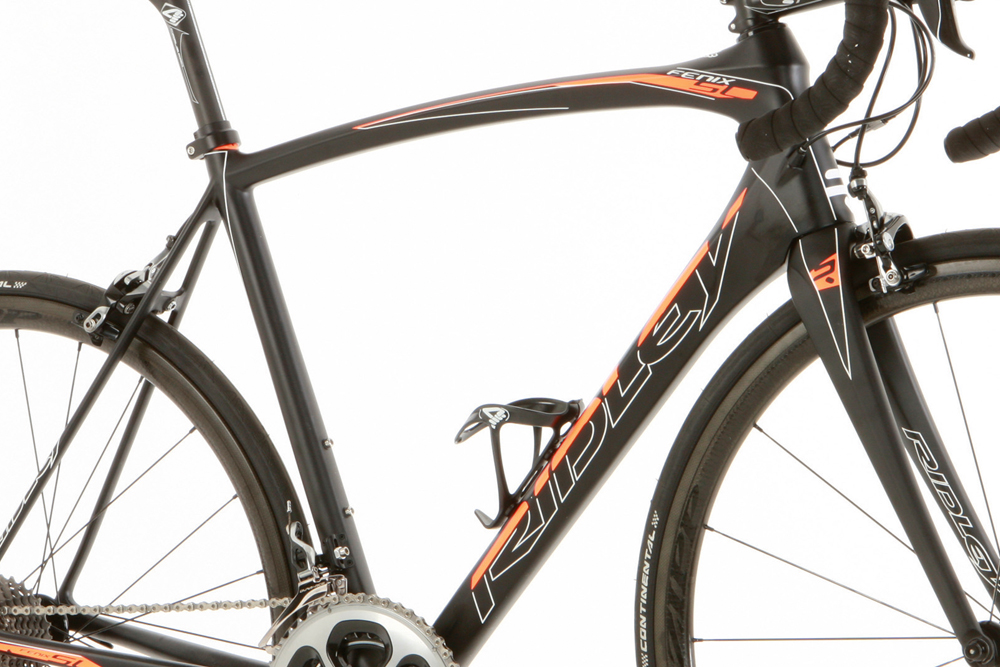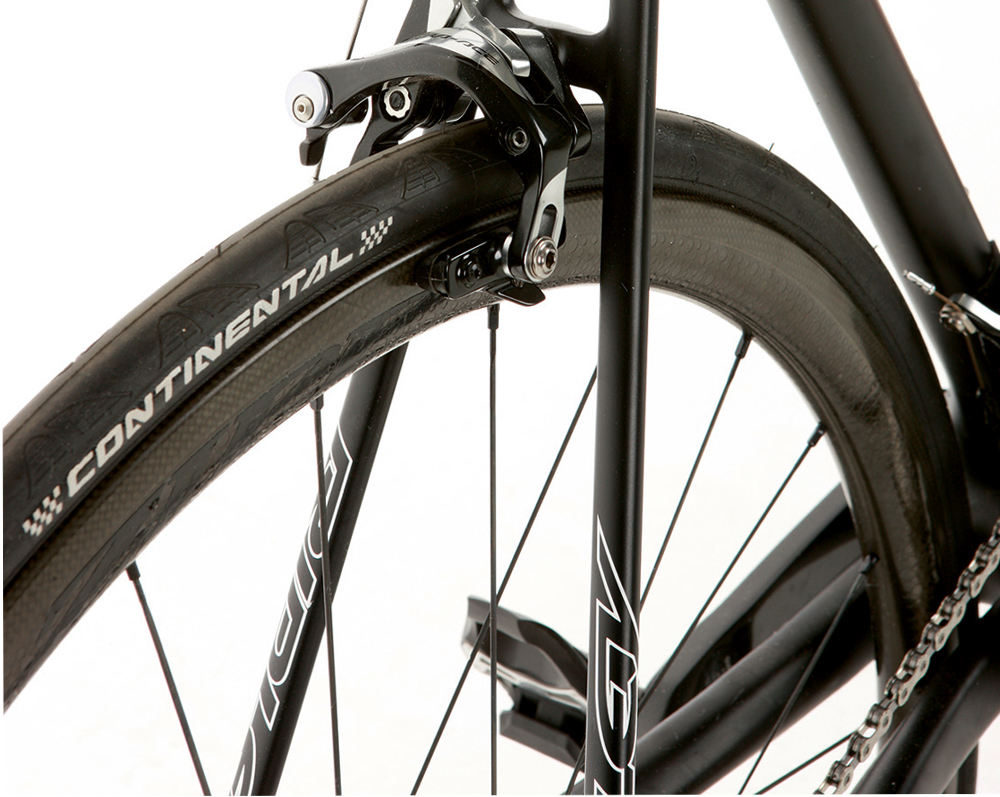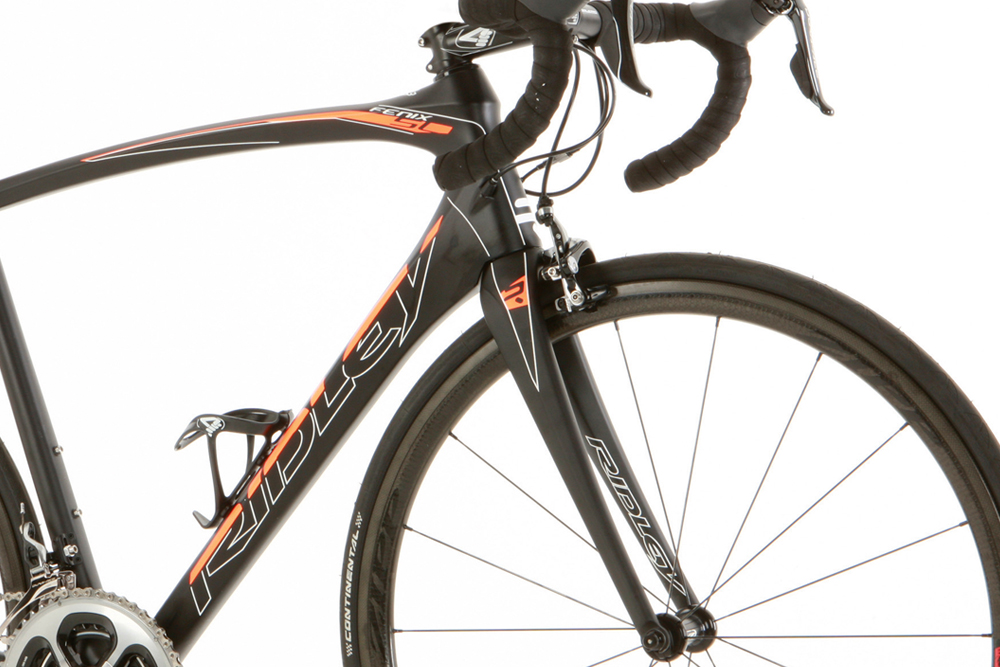Ridley Fenix SL 10 review
The Ridley Fenix SL 10 can cope with the Classics and high speed sprint finishes

With the Fenix SL, Ridley has produced an all-round race bike that copes well with a variety of terrains. I found it ideal for British roads and the price is competitive. The durable carbon lay-up makes it an attractive option for people wanting to race with a reduced risk of handlebar impacts cracking the top tube. While not featherweight, it’s light enough to take to the high mountains, conquer the cobbles and is even capable of delivering André Greipel to the line first in a bunch sprint
-
+
Comfortable
-
+
All-round capabilities
-
+
Competitive price
-
+
Superb handling
-
-
Not the lightest
-
-
Livery could be sexie
You can trust Cycling Weekly.
The Ridley Fenix SL 10 was first spotted being used by the Lotto-Soudal team during the Spring Classics of 2015 and proved very popular with the Belgian team, with several riders continuing to ride it throughout the year.
Within the Ridley stable, it sits between the climber’s favourite, the featherweight Helium SL and the aero Noah-Fast SL, with the Belgian brand describing it as an “all-round endurance platform, and reliable partner for long tough days in the saddle”.
Frame

A Flandrian flag sticker proclaiming ‘tested on pavé’ instantly reveals the frame’s raison d’être. The top tube has a ‘leaf-spring’ appearance, a theme that continues to the rear stays which are ‘flat’ and spring-like at the seat tube, becoming more rounded at the rear dropout.
>>> The Koppenberg and the defining cobbles, bergs and climbs of the Belgian Classics
To further bolster comfort, the frame is also designed to accommodate 30mm tyres. The previous Fenix had a PF30 bottom bracket, with this version equipped with the BB86 standard, which is wider and makes extra room to add carbon and increase chainstay stiffness.

Ridley claims the lay-up and diamond tube sections of the Fenix SL offer hugely increased side impact resistance over conventional round ones. This durability is an attractive feature and means the risk of tube failure in the event of a crash is much lower.
The added comfort and durability comes at a slight weight penalty over a superlight frame and fork, but despite this the Fenix SL comes in at very respectable 7.1kg for the complete build you see here.
>>> Should the UCI weight limit be scrapped?
Although unquestionably an endurance platform, the Fenix’s geometry is still within the realms of a race bike, with our size medium having a stack and reach of 573mm and 392mm respectively.
For those who like stats, Ridley claims that this all-new frame is 15 per cent lighter, eight per cent stiffer, and five per cent more compliant than its predecessor.

The redesigned fork and head tube are also claimed to improve aerodynamics too. The frame is also fully compatible with both mechanical and electronic groupsets, with all cables running internally.
Specification

A WorldTour frameset as used by Lotto-Soudal is at the centre of this package and it is refreshing to see a bike where there are no shortcomings on the spec sheet.
All too often we see bikes specified with a superb frame, but at the expense of wheels that do not do the bike justice or a compromised groupset.
This is not the case here, with the Zipp 202 Firecrest hoops and complete Shimano Dura-Ace groupset complementing the frame well. Even the tyres are top quality, with our test bike fitted with a pair of Continental GP4000S IIs.
>>> Behind the scenes at Continental’s bicycle tyre factory
Ridley has been able to reduce the overall price by using its own proprietary stem, bars, seatpost and saddle.
However, ‘own brand’ does not mean lesser performance. The components are all carbon, lightweight and of high quality. I should point out that I swapped the saddle for my favoured Fizik Arione for the majority of testing.
Riding

An endurance bike needs a suitable test. I chose the epic Rapha Manchester to London in aid of Ambitious about Autism.
This ride turned out to be 388km in a single day and involved a variety of terrain and just about every road surface imaginable.
>>> Going the extra miles: how to train for and complete an ultra-distance sportive
Comfort was superb with the Fenix doing an excellent job of ironing out road imperfections. The carbon bar and stem also absorbed road buzz which really helped me save energy and made the experience more enjoyable.
At the end of the ride I felt that the bike had performed superbly and was not left wishing I had selected something different. The Fenix SL had certainly delivered on its endurance and comfort claims.
The Fenix SL excels in another area, too. Handling is easily among the best of any bikes I have ridden, with the Fenix SL inspiring confidence through the corners and particularly when descending at speed.
A downside to super stiff, light bikes is that they can be ‘chattery’ when pushed through corners, but the Fenix is beautifully balanced, possessing a secure, planted feel. Although there are more aerodynamic frames out there, I would argue the that limiting factor in descending speed (with regards to bike design) is the handling characteristics.
I consistently set Strava PRs descending on this bike. Climbing out of the saddle feels very direct and efficient, but the bike didn’t feel quite as snappy as comparably lighter machines when attacking or accelerating hard.
The Ridley Fenix SL 10 isn't the only bike Lotto-Soudal ride
Value
When compared to the likes of Specialized, Trek and Cervélo, Ridley is very competitive on price. Equipped with full Dura-Ace and Zipp 202 Firecrest wheels, this bike is good to go and will not require any upgrades to do the frame justice.
>>> Shimano Ultegra Di2 electronic groupset and Shimano Ultegra mechanical groupset (video)
However, it is still expensive, so you may want to consider the Ultegra-equipped Fenix SL30, which is £2,100 and uses the exact same frame and fork as this model and comes with Fulcrum Racing 5 wheels.
A complete Shimano Ultegra groupset and WorldTour standard frameset for around two grand is a very attractive proposition indeed.

Thank you for reading 20 articles this month* Join now for unlimited access
Enjoy your first month for just £1 / $1 / €1
*Read 5 free articles per month without a subscription

Join now for unlimited access
Try first month for just £1 / $1 / €1
Get The Leadout Newsletter
The latest race content, interviews, features, reviews and expert buying guides, direct to your inbox!
Oliver Bridgewood - no, Doctor Oliver Bridgewood - is a PhD Chemist who discovered a love of cycling. He enjoys racing time trials, hill climbs, road races and criteriums. During his time at Cycling Weekly, he worked predominantly within the tech team, also utilising his science background to produce insightful fitness articles, before moving to an entirely video-focused role heading up the Cycling Weekly YouTube channel, where his feature-length documentary 'Project 49' was his crowning glory.
-
 Man hands himself in to Belgian police after throwing full water bottle at Mathieu van der Poel during Paris-Roubaix
Man hands himself in to Belgian police after throwing full water bottle at Mathieu van der Poel during Paris-Roubaix30-year-old was on Templeuve-en-Pévèle cobbled sector when television pictures showed the bottle hitting him in the face
By Tom Thewlis Published
-
 'I'll take a top 10, that's alright in the end' - Fred Wright finishes best of British at Paris-Roubaix
'I'll take a top 10, that's alright in the end' - Fred Wright finishes best of British at Paris-RoubaixBahrain-Victorious rider came back from a mechanical on the Arenberg to place ninth
By Adam Becket Published
-
 'This is the furthest ride I've actually ever done' - Matthew Brennan lights up Paris-Roubaix at 19 years old
'This is the furthest ride I've actually ever done' - Matthew Brennan lights up Paris-Roubaix at 19 years oldThe day's youngest rider reflects on 'killer' Monument debut
By Tom Davidson Published